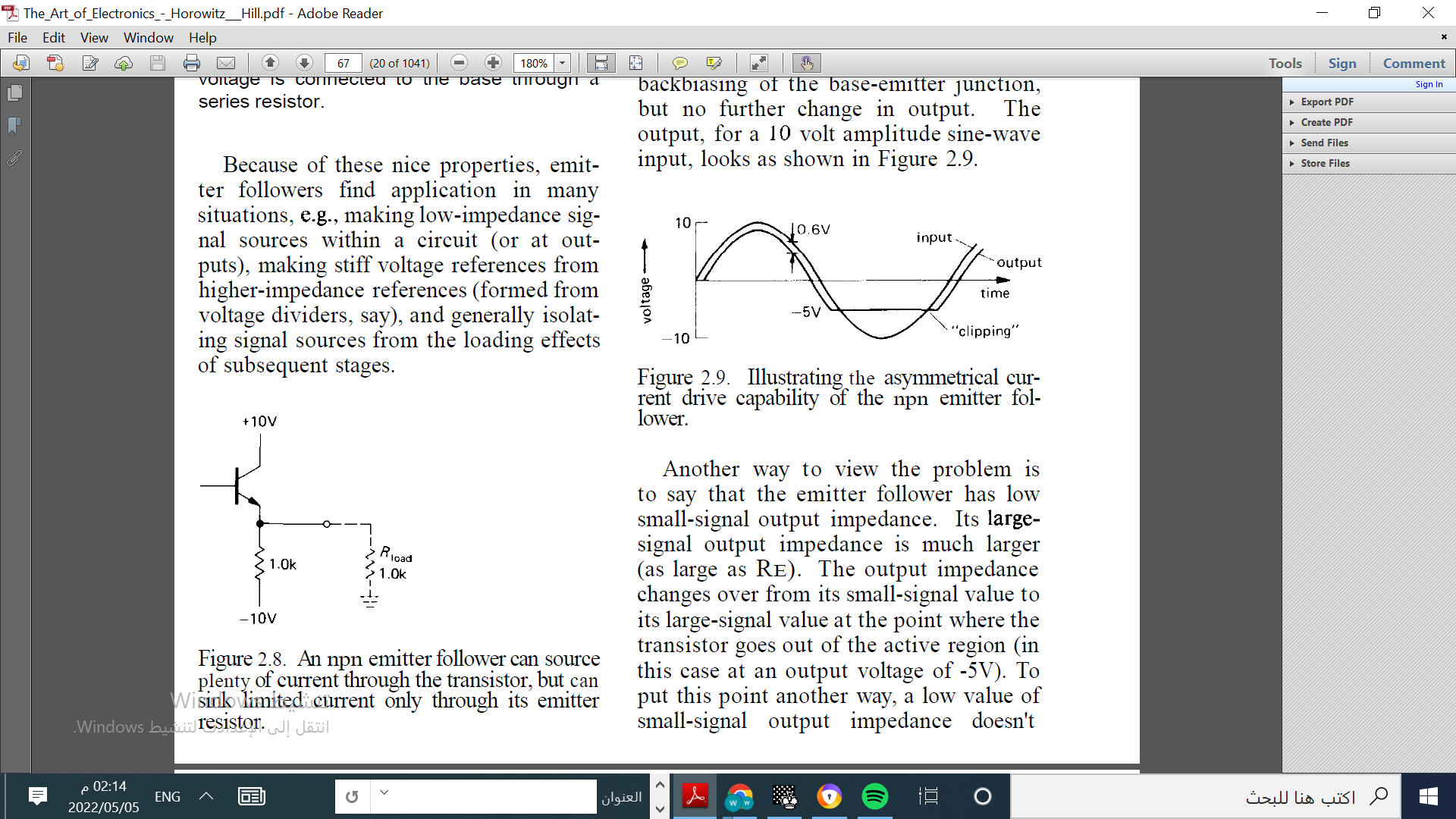libyantiger
Member level 5

in this text book "the art of electronics" for horowitz the writer said that the transistor will be shuted down
at -5 vdc the output will be cutted like shown
i cant see why the output will be cut
since at -5vdc the emitter base junction will still be forward baised since the -5 vdc is more positive than -10
and thus the transistor will be working normally
any explaination why should the emitter follower stop conduction at -5vdc ?

at -5 vdc the output will be cutted like shown
i cant see why the output will be cut
since at -5vdc the emitter base junction will still be forward baised since the -5 vdc is more positive than -10
and thus the transistor will be working normally
any explaination why should the emitter follower stop conduction at -5vdc ?



